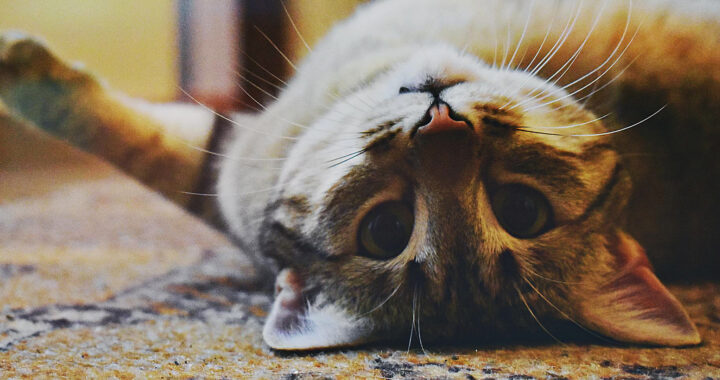The phrase “cat-like reflexes” is not a mere compliment pulled out of nowhere. It is grounded in reality. Domestic cats have one of the best reflexes in the animal world. Their reaction time is faster than humans and dogs. Even birds and reptiles pale in comparison. Researchers have been investigating this defining attribute not only to understand the underlying biological mechanism or uncover insights into balance and coordination but also to determine possible practical applications in fields like neuroscience and robotics.
Fine Points: Explaining the Science of Cat Reflexes and Some Interesting Facts
Interesting Facts
An average cat has a reaction time of around 20 to 70 milliseconds. Note that humans have around 150 to 300 milliseconds. The reflex of a cat is also more versatile than the naturally fast striking reflexes of reptiles like snakes. Cats can land on their feet in most falls due to their innate righting reflex. Their reflexes also ensure precise landing even on narrow or unstable surfaces.
Domestic cats share the same reflex mechanisms as big cats like tigers and lions. However, due to their larger size, bigger cats are less nimble. The smaller and lighter frame of cats makes them more agile. They can also pounce at speeds of up to 30 miles or 48 kilometers per hour in a short burst. This allows them to outmaneuver and catch most rodents, snakes, and birds.
Researchers have studied the science behind the amazing reflexes of cats for various reasons. The motivations behind their pursuits range from understanding animal physiology and evolution to determining possible practical applications. For example, in neuroscience, these reflexes provide a model for investigating neural pathways and brain-to-muscle communication.
Several studies compare reflexes across different animal species to uncover general principles of locomotion and reflex actions. The feline vestibular system has also been studied not only to diagnose and treat balance-related diseases in domestic cats and other animals but also to explore options for treating or managing balance-related disorders affecting humans.
Engineers have also studied cats to replicate their reflexes and other physical attributes in robotics and develop robots capable of maintaining balance, recovering from falls, and navigating complex environments. The innate righting reflex of cats has also been studied for its potential practical applications in designing aircraft that maintain orientation during free falls.
Reflex Mechanisms
The general reason behind the amazing reflexes of cats lies in their evolutionary adaptations. These animals evolved as predators and prey in the wild. Reflexes were essential for hunting agile prey and escaping predators. Thus, from an evolutionary perspective, cats developed specific biological capabilities that granted them with quick reaction time and precise movements.
Note that cats have a highly efficient nervous system for gathering and processing sensory inputs from their environment. Their eyes have a broad field of vision and are tuned for detecting motion rather than fine detail. Specific adaptations include large pupils, a light-sensitive retina, and high number of rod cells suited for perceiving subtle movements even in near darkness.
Cats can also detect frequencies up to 65 kHz. Humans can only detect up to 20 KHz. Their mobile ears rotate independently to allow them to pinpoint the exact location of a sound. Their whiskers are also sensitive tactile organs that detect changes in air currents and nearby objects while their paw pads are rich with nerve endings for assessing texture and surface movements.
Sensory inputs are transmitted to the spinal cord and cerebellum via specialized neural pathways designed for speed and efficiency. These signals are prioritized for immediate action over slower decision-making processes. Most reflexive actions are essentially managed directly by the spinal cord without requiring conscious thought to ensure split-second reactions.
The entire anatomy of cats is built for fast reflexes. Their vestibular system grants them spatial awareness and proprioception or the ability to sense movement and position. Their musculoskeletal system includes a high muscle-to-weight ratio, flexible spine and intervertebral disc, and fast-twitch muscle fibers that give them sudden bursts of speed and power.
Summary: Understanding and Appreciating the Amazing Reflexes of Cats
Cats have one of the best reflexes in the animal kingdom. Their quick reaction times and physical prowess are a product of evolution. They evolved in environments where survival depended on both their ability to catch prey and avoid becoming prey themselves. As solitary hunters and small mammals, they faced constant pressure from both sides of the predator-prey dynamic, which shaped their reflexes and physical abilities over millions of years.
The reflex-related evolutionary adaptations of cats are expressed in their efficient nervous system that integrates and prioritizes the processing of sensory inputs from their acute vision, hearing, and touch, and is further complemented by their unique vestibular system that gives them heightened proprioception and musculoskeletal structure that grants them remarkable physical strength, balance, coordination or agility, flexibility, and short-burst endurance.
FURTHER READINGS AND REFERENCES
- Duysens, J. 2024. The Nine Lives of Cat Reflexes. The Journal of Physiology. 602(9): 1881 Wiley. DOI: 1113/jp286594
- Manerikar, A. and Anandpara, T. 2015. Design of a Practical Cat-righting Reflex Model. Procedia Computer Science. 45:514–523. Elsevier BV. DOI: 1016/j.procs.2015.03.092
- Windle, W. F. and Fish, M. W. 1932. The Development of the Vestibular Righting Reflex in the Cat. Journal of Comparative Neurology. 54(1): 85-96. Wiley. DOI: 1002/cne.900540107
